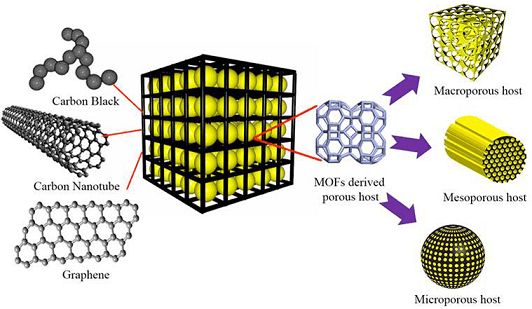Graphene-Wrapped Lithium-Sulfur Batteries May Replace Lithium-ion Batteries
Today most of the battery operated electronic gadgets are powered by lithium ion batteries. But with the growing demand for long lasting batteries, a new substitute in the form of Li-S batteries is set to replace these Lithium ion batteries. Lithium–sulfur (Li–S) batteries are known for high energy densities of about 500 W·h/kg. These rechargeable lithium–sulfur batteries are relatively light in weight and are less expensive as compared to the lithium ion batteries. A few reasons why these Li–S batteries have not been used on a wider scale till now are the performance-related issues such as low efficiency and capacity degradation. To address these problems and make the batteries commercially viable, a team of researchers led by Dr. Vasant Kumar at the University of Cambridge and Professor Renjie Chen at the Beijing Institute of Technology has designed a novel sulfur cathode at nanolevel.

While performing the research, the team referred the metal organic frameworks (MOFs) whose study is developed from the study of zeolites. They produced conductive porous carbon cage that has sulphur as its host. And, the electrochemical reactions take place in the storage units of sulfur-carbon nanoparticle. The MOF has been known recently for its wide range of applications such as carbon dioxide sequestration, gas purification, gas separation, et al. According to Kai Xi, a research scientist at Cambridge, the cycling stability and high efficiency further becomes better as the active materials present within the carbon scaffold are confined to it. The team further found that if they enclose the composite structure of sulfur-carbon storage unit with a fine sheet of flexible graphene then the speed of electrons and ions increases.
The interconnected graphene network along with high electrical conductivity improves the capacity along with cycle stability of the battery. This design will be a gateway for fabrication of non-topotactic (does not involve any structural change to a crystalline solid) reactions-based energy carrying systems. The work is at a nascent stage and the team will further enhance their work by paying attention to the fabrication of hybrid free-standing sulfur cathode systems in order to boost the electrochemical performance of batteries.
You can also have a detailed look of the research that was published in the APL Materials Journal.
Source: <a href="https://www.aip.org/publishing/journal-highlights/future-batteries-lithium-sulfur-graphene-wrapper" target="_blank" rel="nofollow noopener noreferrer">Future Batteries: Lithium-Sulfur with a Graphene Wrapper | American Institute of Physics</a> | <a href="https://en.wikipedia.org/wiki/Lithium%E2%80%93sulfur_battery" target="_blank" rel="nofollow noopener noreferrer">Lithium%E2%80%93Sulfur Battery</a>
The interconnected graphene network along with high electrical conductivity improves the capacity along with cycle stability of the battery. This design will be a gateway for fabrication of non-topotactic (does not involve any structural change to a crystalline solid) reactions-based energy carrying systems. The work is at a nascent stage and the team will further enhance their work by paying attention to the fabrication of hybrid free-standing sulfur cathode systems in order to boost the electrochemical performance of batteries.
You can also have a detailed look of the research that was published in the APL Materials Journal.
Source: <a href="https://www.aip.org/publishing/journal-highlights/future-batteries-lithium-sulfur-graphene-wrapper" target="_blank" rel="nofollow noopener noreferrer">Future Batteries: Lithium-Sulfur with a Graphene Wrapper | American Institute of Physics</a> | <a href="https://en.wikipedia.org/wiki/Lithium%E2%80%93sulfur_battery" target="_blank" rel="nofollow noopener noreferrer">Lithium%E2%80%93Sulfur Battery</a>
0
